Charleston Currents #12.32 | June 22, 2020
SENSITIVE FLOWER: Sullivan’s Island resident Karen Byko took this beautiful photo recently of a sensitive briar (mimosa microphylla) on the side of a local road. Notice how it seems to glow. She also sent along a description of the flower, which some consider a weed, from Southern Piedmont Natural History: “The long, pink stamens extend far beyond the rest of the flower and each one bears a yellow anther of pollen. … But why is it called ‘sensitive’ briar? Because the leaflets respond to touch by rapidly closing! Why? One adaptive function is that it exposes the thorns and deters herbivores. … Just as a plant wilts when it loses turgor pressure within its cells from a lack of watering, Sensitive Briar can rapidly close its leaflets by altering turgid pressure within specific cells at the base of the leaflets.” Neat. Thanks, Karen!
 TODAY’S FOCUS: Council vote may bring down Calhoun statue this week
TODAY’S FOCUS: Council vote may bring down Calhoun statue this week
COMMENTARY, Brack: Repeal the Heritage Act this week
IN THE SPOTLIGHT: Charleston Gaillard Center
NEWS BRIEFS: On the Heritage Act, Fresh Future Farm and coronavirus
FEEDBACK: State fortunate to have Elmore as future doctor
MYSTERY PHOTO: Pretty gazebo begs question, “Where am I?”
CALENDAR: Redux exhibit now open
S.C. ENCYCLOPEDIA: Denmark Vesey
Council vote may bring down Calhoun statue this week
Staff reports | Charleston City Council is poised Tuesday evening to vote on a resolution forwarded by Mayor John Tecklenburg to remove the statue of John C. Calhoun from atop a 110-foot pedestal at Marion Square.
Calhoun, a former vice president and powerful senator in the years before the Civil War, advocated and developed the political theory of nullification, which holds that states should be able to invalidate federal laws. Never legally upheld in federal courts, this principle of state’s rights was used by slave-holding states to break away from the United States when, most historians agree, the war was caused for economic reasons to perpetuate the system of human bondage of enslaved Africans.
If the Wednesday vote, which reportedly has the backing of all members of council, is not challenged in the courts, observers say the statue could be down as early as Wednesday morning, a relatively swift end to a controversial statue that has been a thorn in the side for the city’s African Americans for more than a century.
Here are the prepared remarks from a Wednesday speech by Tecklenburg at Marion Square:
“Good afternoon. It’s an honor to be with you here today, as we come together on this iconic square not to discard our city’s past, but to honor its lessons, not to erase our long and often tragic history, but to begin to write a new and more equitable chapter.
For generations, the bronze figure of U.S. Senator and Vice President John C. Calhoun has risen high over the peninsula of Charleston, commemorating a man who can rightly be called both South Carolina’s most prominent national statesman, and also its most consequential defender of slavery and white supremacy.
In his own words, ‘I hold that in the present state of civilization,” Mr. Calhoun argued on the floor of the United States Senate in June of 1837, “where two races of different origin, and distinguished by color, and other physical differences, as well as intellectual, are brought together, the relation [referring to slavery] now existing in the slaveholding States between the two, is, instead of an evil, a good — a positive good.’
That we as Charlestonians must reckon with Mr. Calhoun’s towering and deeply troubling legacy is a given. That we must allow his memorial to continue to divide our city while we do that reckoning, is not a given. And that is why, today, I will be sending our City Council a resolution calling for the relocation of the Calhoun statue to a local museum or other academic institution, where that necessary and long overdue reckoning can truly begin.
At this point, it’s important for our citizens to know that we are taking this action only after careful consideration of the facts of Mr. Calhoun’s life, the explicit duty of care that our city assumed when it formally accepted ownership of the statue in July of 1898, and the state law known as the Heritage Act, which forbids the removal of war-related markers in South Carolina.
And with that legal and historical research now complete, we are confident that, because the statue belongs to the city and rests on ground owned by a private entity, our Council has full authority to order its relocation to a setting where it can be placed in its full historic context. We are also confident that it is simply the right thing to do.
Fellow Charlestonians, five years ago today, our city endured a most grievous loss, as nine beautiful souls were cruelly stolen from us in a hate-filled spasm of racist violence at Mother Emanuel AME church, just a block from where we now stand. But in the days that followed, thanks to amazing grace and the deep faith of the families of the Emanuel Nine and the extraordinary act of forgiveness that so moved the world, the miracle of grace came upon our city, and set us on the difficult but essential road to racial justice and conciliation.
Five years later, we continue to take our steps on that journey to racial justice and conciliation. But as this remarkable display of unity by our City Council amply demonstrates, we are taking those steps with clear purpose, and we are taking them together as one city — one Charleston.
Thank you all for coming here today. And thank you for recognizing that just as we are shaped by the history of those who came before us, so too do we shape the history of those yet to come.
With this action today, we are shaping that future history for the better. And with the example of the remarkable families of the Emanuel Nine always in our hearts, we are challenged to continue shaping this new history by taking the next right steps toward respect for all, racial justice and equity here in the Holy City.
Thank you, God bless you, and God bless the great city of Charleston, South Carolina.”
As more people stay home to deal with the coronavirus crisis, people are looking for things to do. You can find some fun things to do online in our calendar section below, but let us also encourage you to FORWARD your issue of Charleston Currents to your friends and encourage them to subscribe. It’s got a great price, as you know: Free! We hope they’ll enjoy our coverage.
Now also would be a great time to contribute as we deal with the crisis. In advance, thank you.
BRACK: Repeal the Heritage Act this week
By Andy Brack, editor and publisher | The curious thing about laws is they can be repealed.
When South Carolina legislators meet this week to talk about money, they need to add repealing the Heritage Act to the agenda. Twenty years ago, the act passed as the fulcrum of a compromise to remove the Confederate battle flag from the Statehouse dome. Now, its time has come. It needs to be shelved itself, gone like prohibition and old laws on fugitive slaves, sodomy, investment banking and miscegenation.
 Unfortunately, lawmakers sometimes seem to forget they have the power to get rid of a law when it is no longer useful. Somehow, even years later, they appear to convince themselves that they’ve dealt with a pesky issue by passing the old law. It’s as if they put on blinders, likely because they have so many other problems. They forget times and conditions change so much that old solutions need to be reconsidered.
Unfortunately, lawmakers sometimes seem to forget they have the power to get rid of a law when it is no longer useful. Somehow, even years later, they appear to convince themselves that they’ve dealt with a pesky issue by passing the old law. It’s as if they put on blinders, likely because they have so many other problems. They forget times and conditions change so much that old solutions need to be reconsidered.
Such is the case with the Heritage Act, which removed the flag off the dome in 2000 to the Statehouse grounds. But the act went further, creating an African American monument on Statehouse grounds and prohibiting removal of memorials on public property unless there’s a two-thirds vote by the House and Senate.
The last provision is today’s sticky wicket. It meant monuments like those of Confederate soldiers that dot courthouse squares around the state cannot be removed without a state legislative override. In other words, the state gets to decide what happens to monuments on the grounds of local, public parks. Seems a little heavy-handed, no? A way for the state to keep its ham-handed fist on all of those Confederate monuments glorifying the Lost Cause and, many feel, reminding minorities of a generational racial agenda in the Palmetto State?
Some state lawmakers say the Heritage Act is unconstitutional because the two-thirds provision is overly burdensome. Others say it violates home rule. Both are solid points, but there’s a remedy at hand: Fifty percent plus one of the state House and Senate members can vote Wednesday or Thursday to repeal the act. And then it will be over.
Interestingly, the vast majority of South Carolina legislators — 140 of the 170 in the two chambers of the Statehouse — have never had a chance to vote on the Heritage Act, according to an analysis by Statehouse Report. Almost 70 percent of current state senators haven’t had their say. About seven out of eight members of the House haven’t voted on it.
With all of the turmoil in the state, they should have a chance to vote again on the Heritage Act — this time to repeal it. Let’s not kick the can down the road.
Back in 2000 when the Heritage Act was approved, it got a lot of support because lawmakers who never thought the Confederate flag would be removed from the top of the Statehouse dome saw a ray of hope — and understood that the act would get it down. They pounced on the opportunity, figuring they’d deal with the devils in the deal later. Meanwhile, many white conservatives shelved the whole matter, figuring it had been dealt with.
But now come killings by police of unarmed black men from North Charleston to Minneapolis to Atlanta. Now comes the Black Lives Matter movement, which has unwound the festering bandage of racism that boils in our country. Now come protests, unrest and tension in our communities.
The Heritage Act was a remedy for its time. It has been changed once — in 2015, when lawmakers agreed, after the slaughter of S.C. Sen. Clementa Pinckney and eight members of his church in Charleston, to move the battle flag off the Statehouse grounds into a place of history.
That’s where all of these monuments now need to go — away from our public places of honor into a museum or educational setting. Now is the time to repeal the Heritage Act once and for all. It’s time for local communities to have conversations, action and change on how they can start healing decades-old racial wounds and come together as a people.
Carpe diem, state representatives and senators. Deal with the devils in the Heritage Act. Be leaders and help our state to start the healing.
Andy Brack is editor and publisher. Have a comment? Send to: editor@charlestoncurrents.com.
Charleston Gaillard Center
 Charleston Gaillard Center provides the Lowcountry with a world-class performance hall, elegant venue space and vibrant educational opportunities that inspire dynamic community throughout the area through the power of the performing arts. The Center’s vision is to enrich the diverse community of Charleston with artistic and cultural experiences that are accessible and unique, and to serve as an educational resource for generations to come.
Charleston Gaillard Center provides the Lowcountry with a world-class performance hall, elegant venue space and vibrant educational opportunities that inspire dynamic community throughout the area through the power of the performing arts. The Center’s vision is to enrich the diverse community of Charleston with artistic and cultural experiences that are accessible and unique, and to serve as an educational resource for generations to come.
Did you know that the Charleston Gaillard Center is a 501c3 non-profit that works with over 25,000 students each year from the tri-county area? Promoting education is one of the core values of the Charleston Gaillard Center and an integral part of our mission. By broadening the reach of arts-education in the Lowcountry the Gaillard Center encourages learning through the arts and serves as a powerful tool for student achievement and personal development while providing people of all ages with the opportunity to cultivate and grow their talents and appreciation for the arts. To learn more about our education initiative, click here: www.gaillardcenter.org/outreach.
For more information, click the links below:
- Buy tickets and see our great events
- Become a member today
- Plan your event at the Charleston Gaillard Center
- Learn about our education and community programs
- Contact the Gaillard Center.
- To meet all of our underwriters, click here.
On the Heritage Act, Fresh Future Farm and coronavirus
![]() 4/5ths of current lawmakers haven’t voted on Heritage Act. Only 30 of the state’s current 170 legislators cast votes 20 years ago on whether the state should protect monuments from removal. That means more than two-thirds of the members of the General Assembly have yet to weigh in on the controversial Heritage Act that effectively prevents any changes to public memorials. Learn about the Heritage Act and read more in this story by Statehouse Report’s Lindsay Street.
4/5ths of current lawmakers haven’t voted on Heritage Act. Only 30 of the state’s current 170 legislators cast votes 20 years ago on whether the state should protect monuments from removal. That means more than two-thirds of the members of the General Assembly have yet to weigh in on the controversial Heritage Act that effectively prevents any changes to public memorials. Learn about the Heritage Act and read more in this story by Statehouse Report’s Lindsay Street.
Fresh Future Farm still waiting to buy land. Fresh Future Farm in North Charleston has raised tens of thousands of dollars to buy less than an acre of land in a food desert it serves, but it’s getting the runaround and still waiting to strike a deal after months. Read the full story from the Charleston City Paper.
Wentworth offers powerful poem. S.C. Poet Laureate Marjory Wentworth, a contributing editor for Charleston Currents, offered this powerful poem of a Confederate dialogue that juxtaposes the direct words of John C. Calhoun and white nationalist Dylann Roof. The poem, which can be read vertically or horizontally, is “as if they are speaking to each other across the centuries,” Wentworth said.
COVID-19 cases continue to spike in S.C. Cases of COVID-19 soared over the last week with 5,886 confirmed cases and another 22 probable cases reported by state health officials. “Every day that we don’t all do our part, we extend the duration of this virus,” State Epidemiologist Linda Bell said Thursday. The virus, she emphasized, “does not take a day off.” Officials implore citizens to wear masks in public and follow social distancing guidelines.
House, Senate scheduled to meet. The official chamber calendars show the Senate will meet noon Tuesday, and the House will meet 1 p.m. Wednesday. Tuesday’s Senate meeting will address its Finance Committee recommendation for CARES to send over to the House before it convenes. Thursday will be a back-up day for the House if business is not completed on Wednesday, according to the House Clerk’s office. The Senate will schedule its meetings day-by-day depending on the House’s meetings, according to the Senate Clerk’s office. Calendar for the Senate here. Calendar for the House here.
McCoy confirmed. Former state Rep. Peter McCoy was unanimously confirmed by the U.S. Senate as the state’s new U.S. Attorney.
- Have a comment? Send to: editor@charlestoncurrents.com
State fortunate to have Elmore as future doctor
To the editor:
![]() Thank you, Brian Elmore, for stating the reasons for disparities in black susceptibility to Corona virus AND pointing out that our S.C. government bears much responsibility for this.
Thank you, Brian Elmore, for stating the reasons for disparities in black susceptibility to Corona virus AND pointing out that our S.C. government bears much responsibility for this.
Our state government had a big opportunity to expand Medicaid when Obamacare was enacted. Under Gov. [Nikki] Haley’s leadership, increased Medicaid and additional health care opportunities were rejected. Yes, that’s as life-threatening as extreme police force for our state’s vulnerable population.
South Carolina is fortunate to have you as an eloquent future M. D.
— Carol Ann Smalley, Charleston, S.C.
Hooray for Elmore’s call for Medicaid expansion
To the editor:
Hooray for Brian Elmore and the S.C. Hospital Association! Our state has never really looked at the economics of Medicaid expansion.
Every other state that has expanded Medicaid and documented its impact has seen sufficient economic growth to more than compensate any costs that might be incurred by the state. That does not even include direct savings like covering all residents of our state prisons, and lower-income state employees and their children who are currently enrolled in the state’s costly health insurance plan.
— Steve Skardon, Mount Pleasant, S.C.
Got something to say? Let us know by mail or email
We’d love to get your impact in one or more ways:
Send us a letter: We love hearing from readers. Comments are limited to 250 words or less. Please include your name and contact information. Send your letters to: editor@charlestoncurrents.com. | Read our feedback policy.
Tell us what you love about the Lowcountry. Send a short comment – 100 words to 150 words – that describes something you really enjoy about the Lowcountry. It can be big or small. It can be a place, a thing or something you see. It might be the bakery where you get a morning croissant or a business or government entity doing a good job. We’ll highlight your entry in a coming issue of Charleston Currents. We look forward to hearing from you.
Pretty gazebo begs question, “Where am I?”
Here’s an interesting, modern gazebo somewhere in the Lowcountry. Tell us where and something about any facet of the photo. Send your best guess to editor@charlestoncurrents.com. And don’t forget to include your name and the town in which you live.
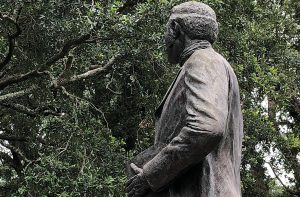 Our most recent mystery, “Mysterious statue,” shows a bronze statue of Denmark Vesey in Hampton Park.
Our most recent mystery, “Mysterious statue,” shows a bronze statue of Denmark Vesey in Hampton Park.
Todd Chas of Charleston called it a “very appropriate choice for this week’s mystery photo” with lots of talk in Charleston about taking down the statue of slaveholder John C. Calhoun. As Calhoun was beginning public service, Vesey inspired a slave revolt that led to his death.
Congratulations to all who identified the statue: Chris Brooks of Mount Pleasant; Jim McMahan, Cynthia Bledsoe, Chris Kenison, Delia A. Smith, Judy Hines, Paul Wood, Joseph Rotter and Frederick George, all of Charleston; Jay Altman of Columbia; George Graf of Palmyra, Va.; Allan Peel of San Antonio, Texas; Archie Burkel of James Island; Marnie Huger of Richmond, Va.
McMahan explained that Vesey “was a carpenter and a leader of the African American community in Charleston. He was accused and convicted of being the leader of an uprising in June of 1822 and was put to death on July 2 of that year.” Kenison reminded that Vesey bought his freedom after winning a lottery.
Peel shared more insights about Vesey, who was a founder of Emanuel AME Church: “News of the upcoming rebellion was leaked to the authorities who where able to quell the revolt before it even started, when Vesey and 34 slaves, including some from the household of the state’s governor, were arrested, tried and hanged for ‘attempting to raise an insurrection.’
“The monument is a life-size rendering of Vesey and was created by Ed Dwight, a Colorado-based artist. It was unveiled on Feb. 8, 2014, some 18 years after the monument committee was formed in 1996 by then County Councilman Henry Darby and Curtis Franks of the Avery Research Center. The Black Lives Matter movement held a peaceful and silent moment of prayer around the statue on June 18, 2015, the day after nine parishioners of the Mother Emanuel African Methodist Episcopal Church were tragically and horrifically gunned down by a 21-year-old white supremacist. According to Jack O’Toole, the director of communications for the City of Charleston, the ‘statue of Denmark Vesey is a critical symbol of our citizens’ continuing commitment to racial reconciliation.’”
- Send us a mystery: If you have a photo that you believe will stump readers, send it along (but make sure to tell us what it is because it may stump us too!) Send it along to editor@charlestoncurrents.com.
Redux exhibit now open
![]() Staff reports | Redux Contemporary Art Center will present Creative Corridors: The Annual Redux Studio Artist Exhibition through July 24. The Annual Studio Artist Exhibition is an opportunity for Redux resident artists to showcase a sample of their work, as it relates to a specific prompt and is curated as a group exhibition in Redux’s main exhibition space. The exhibition is open Mondays and Wednesdays from 11 a.m. to 4 p.m. and Fridays from 11 a.m. to 3 p.m. More.
Staff reports | Redux Contemporary Art Center will present Creative Corridors: The Annual Redux Studio Artist Exhibition through July 24. The Annual Studio Artist Exhibition is an opportunity for Redux resident artists to showcase a sample of their work, as it relates to a specific prompt and is curated as a group exhibition in Redux’s main exhibition space. The exhibition is open Mondays and Wednesdays from 11 a.m. to 4 p.m. and Fridays from 11 a.m. to 3 p.m. More.
Also on the calendar:
Safe Sounds at Firefly. You can enjoy these shows at a socially-distanced concert series every Friday and Saturday night through mid-July:
- June 26 & June 27 – The Majestics
- July 3 – The Midnight City Band. (No Safe Sounds concert on July 4.)
- July 10 & July 11 – The Yacht Club
- July 17 & July 18 – The Reckoning
- July 24 & July 25 – TBA with special guest
Tickets for the events are limited to 500 and no more than four tickets can be purchased at a time. Each set of four tickets will secure a spot in a 10-by-10 square, separated on all sides by 8 feet. Guests are encouraged to bring blankets and chairs to enjoy the concert. You are not allowed to bring dogs, children, and outside food and drink. Tickets are available now to anyone 21 and over at citypapertickets.com. Shows will begin at 7 p.m., with doors at 6 p.m.
Aquarium to open new experience on July 4. “Monsters” is a new experience offered starting July 4 at the S.C. Aquarium. “From micro to mega, explore the Aquarium in a whole new way,” according to promotional material. You can also participate online in the attraction’s daily Nature Challenge, a virtual “Passport to Fun” and a “Moment of Zen” that has started. The aquarium also offers daily education classes at 10 a.m. and 2 p.m., Monday to Friday, via its virtual network. Learn more.
Online offerings. Spoleto at Home offers virtual programming through June 5 that you can enjoy from the comfort and safety of your own living room! Tune in for original concerts, best-of Chamber Music hits, and insightful conversations with Festival artists. All programs are free to experience; no tickets required. Click here to find more fun stuff to do.
- Gibbes Museum. You can enjoy lots of local art offerings through the website and social media accounts of the Gibbes Museum. At 10 a.m. on weekdays, the museum posts virtual readings and workshops on Facebook. Find more online.
- Avian Conservation Center. Access videos and live streaming presentations online to learn about what’s going on at the Center for Birds of Prey.
- More. You can visit 500 museums across the world online through this Google amalgamation of sites.
If you have any online events, drop us a line (editor@charlestoncurrents.com) and make sure to put “Online event” in the subject line. Similarly, if you’ve got cool ideas for stuff to do while in isolation at home, send them our way.
Denmark Vesey
Denmark Vesey was probably born on the Danish Caribbean sugar island of St. Thomas around 1767; the names and nationality of his parents are unknown. In 1781 he was purchased by Captain Joseph Vesey, a slave trader, who trained him as a cabin boy during the short voyage to the French colony of Saint Domingue. Captain Vesey sold the boy as one of 390 slaves in the city of Cap François but was forced to purchase him back on April 23, 1782, because the child had displayed “epileptic fits.” These were perhaps feigned, for they ceased once the boy reboarded Captain Vesey’s vessel. This time Joseph Vesey kept him and renamed him Telemaque, after the mythical son of Odysseus. Over time fellow slaves corrupted or punned the name into Telmack and then into Denmark, after the Danish-owned island of his birth.
In the late spring of 1783 Joseph Vesey established himself in Charleston as a ship chandler. Denmark evidently lived with the Vesey family on 281 King Street. For the next seventeen years the literate and multilingual Denmark was responsible for helping to receive imported goods from incoming ships, cataloging items in Captain Vesey’s East Bay Street office, and even conducting minor transactions in his master’s absence. At some point during this time Denmark married an enslaved woman named Beck, who gave birth to at least three of his children: Sandy, Polydore, and Robert. But Denmark and Beck never lived in the same home, and their relationship was further strained in 1796 when Joseph Vesey, now a widower, moved his household to the Grove, an Ashley River plantation.
Denmark’s luck changed on November 9, 1799, when he won $1,500 in the “East-Bay Lottery.” The captain and his wealthy mistress—who by then was Denmark’s legal owner—agreed to let him purchase his freedom for $600. On December 31, 1799, Denmark handed over a portion of his winnings in exchange for his freedom papers. Because he intended to stay in Charleston and learn carpentry, he adopted the surname of Vesey, which was well known among the white businessmen who would be his main clients as the city expanded north up the peninsula.
Vesey rented a modest home at 20 Bull Street. Thomas Bennett, a merchant and politician, constructed his lumber mill at the west end of the avenue on the Ashley River, which made the street a natural home for men who earned their livelihoods in construction. There, following the collapse of his relationship with Beck, Vesey married the much younger Susan, who was born a slave around 1795 but gained her freedom early in the nineteenth century. Despite modern allegations that Vesey practiced polygamy, no evidence exists to support the theory. As the only woman to bear Denmark’s adopted surname, Susan Vesey may have married her husband in one of the city’s churches. To help supplement the family’s meager income, Susan took in laundry and ironing from her white neighbors. Despite later assertions that Vesey died a wealthy man worth more than $7,000, there is no evidence that he ever owned property.
Vesey may have had his marriage to Susan solemnized in the Second Presbyterian Church, which he attended as late as April 1817. But perhaps infuriated by the proslavery brand of Christianity heard within that church’s walls, Vesey became an early member (and lay preacher) in the city’s African Methodist Episcopal Church on Anson Street, commonly dubbed the “African Church.” Although the Reverend Morris Brown’s Sunday sermons included a creative melding of African and Christian elements, Vesey’s nightly Bible lessons turned to “the stern and Nemesis-like God of the Old Testament.” Embittered by the continuing bondage of Beck and his children, Vesey turned his back on the New Testament and what he regarded as its false promise of universal brotherhood.
Recognizing the dangers that the African Church posed to white control, city authorities briefly closed its doors in 1818 and then again in late 1820 and in January 1821. In response, Vesey began to consider a plan by which he might lead his children and disciples into freedom in Haiti. What made his conspiracy unique was not merely the advanced age of its leader (fifty-four years), but that Vesey planned a mass exodus of families out of Charleston. The plot called for urban slaves and bondmen across the Ashley and Cooper Rivers to slay their masters on the morning of Sunday, July 14, 1822, and fight their way toward the city docks. Although Vesey employed several enslaved blacksmiths to forge weapons, the leading conspirators wisely decided not to stockpile weapons nor to recruit thousands of soldiers before mid-July. “Let us assemble a sufficient number to commence the work with spirit,” Vesey remarked, “and we’ll not want men, [as] they’ll fall in behind fast enough.”
On May 22 William Paul, one of Vesey’s chief recruiters, made a fatal mistake. While at the Market Wharf, he spoke of the plan to Peter, a mulatto cook, who passed the alarm to his master Colonel John C. Prioleau. At about the same time another mulatto slave, George Wilson, gave information about the plan to his master, who hurried with the news to Intendant (Mayor) James Hamilton and Governor Thomas Bennett. Exactly one month later, on June 22, Vesey was arrested at the “house of one of his wives,” probably Beck. Four days after his capture, the aged carpenter was brought before two magistrates and five freeholders in the city workhouse. The tribunal found Vesey guilty and sentenced him to hang “on Tuesday next, the 2d July, between six and eight in the morning.” On that morning Warden John Gordon loaded Vesey and five other abolitionists into a “cart” for the two-mile ride north to Blake’s Lands. Before “immense crowds of whites and blacks,” the six men hobbled up the gallows stairs. According to Intendant Hamilton, they collectively “met their fate with the fortitude of Martyrs.”
In all, related to Vesey’s plan, the Charleston courts arrested 131 slaves and free blacks. Thirty were released without trial. Of the 101 men who appeared before the tribunals, the magistrates ordered 35 hanged and 37, including Vesey’s daughter Sandy, transported to Spanish Cuba. Twenty-three were acquitted, 2 more died while in custody, 3 were found not guilty but were whipped, and 1 free black was released on condition that he leave the state. City authorities exiled the Reverend Morris Brown of the AME Church to Philadelphia and razed the building. Vesey’s son Robert rebuilt it in October 1865 at the end of the Civil War.
— Excerpted from an entry by Douglas R. Egerton. This entry may not have been updated since 2006. To read more about this or 2,000 other entries about South Carolina, check out The South Carolina Encyclopedia, published in 2006 by USC Press. (Information used by permission.)
If you like what you’ve been reading, how about considering a contribution so that we can continue to provide you with good news about Charleston and the Lowcountry. Interested? Just click the image below.
OUR UNDERWRITERS
Charleston Currents is an underwriter-supported weekly online journal of good news about the Charleston area and Lowcountry of South Carolina.
- Meet our underwriters
- To learn more about how your organization or business can benefit, click here to contact us. Or give us a holler on the phone at: 843.670.3996.
OUR TEAM
Charleston Currents offers insightful community comment and good news on events each week. It cuts through the information clutter to offer the best of what’s happening locally.
- Mailing address: 1316 Rutledge Avenue | Charleston, SC 29403
- Phone: 843.670.3996
Charleston Currents is provided to you weekly by:
- Editor and publisher: Andy Brack, 843.670.3996
- Contributing editor, common good, Fred Palm
- Contributing editor, money: Kyra Morris
- Contributing editor, Palmetto Poem: Marjory Wentworth
- Contributing editor, real estate: Digit Matheny
- Contributing photographer: Rob Byko
- Charleston Currents also uses content from the outstanding staff at the Charleston City Paper, a sister publication.
SUBSCRIBE FOR FREE
Subscriptions to Charleston Currents are free.
- Click here to subscribe.
- Unsubscribe. We don’t want to lose you as a reader of Charleston Currents, but if you must unsubscribe, you will have to do it through the email edition you receive. Just go to the bottom of any of your weekly newsletters and click the “unsubscribe” function. If that doesn’t work, please send us an email with the word “unsubscribe” in the subject line.
- © 2008-2020, City Paper Publishing, LLC. All rights reserved. Charleston Currents is published every Monday by City Paper Publishing LLC, 1316 Rutledge Ave., Charleston, SC 29403.


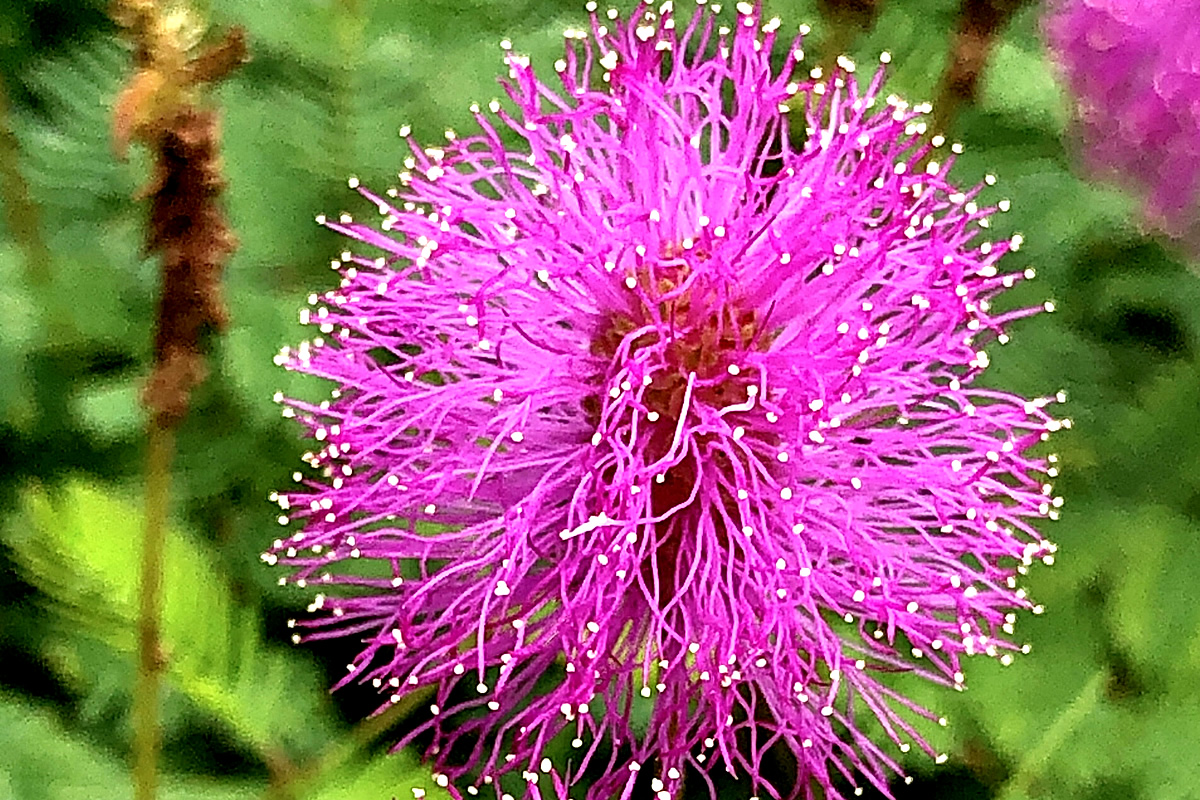
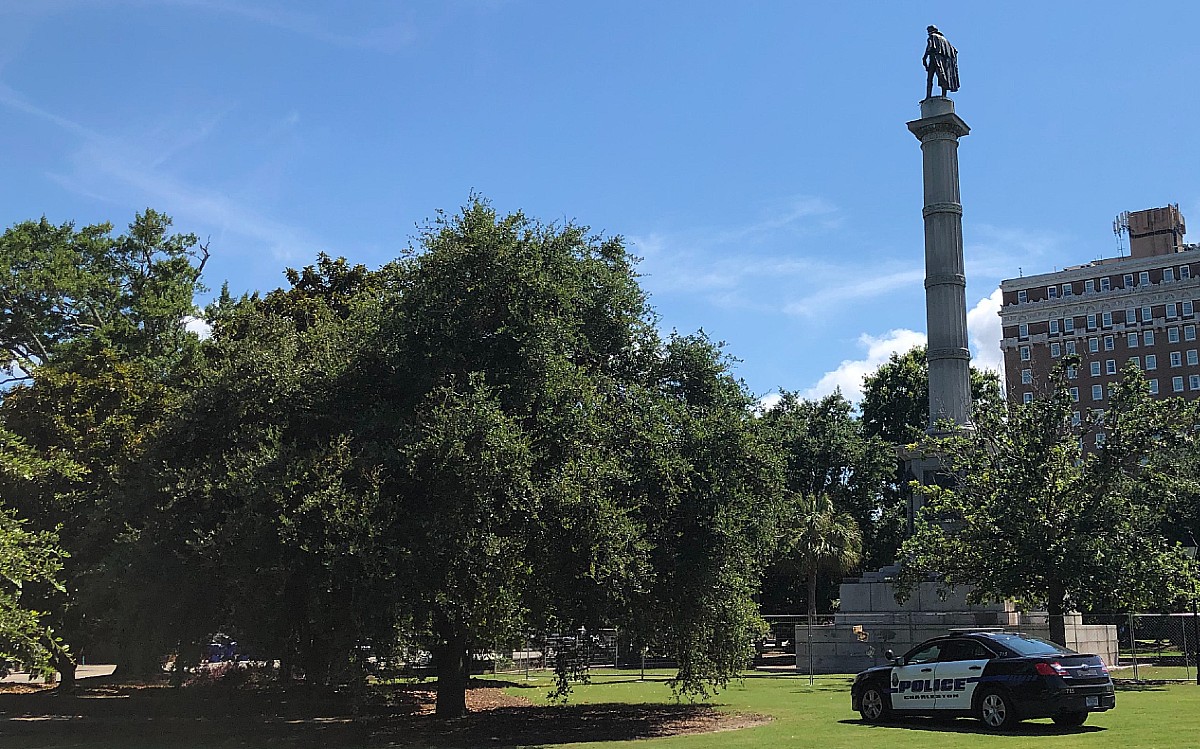
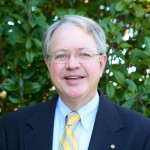

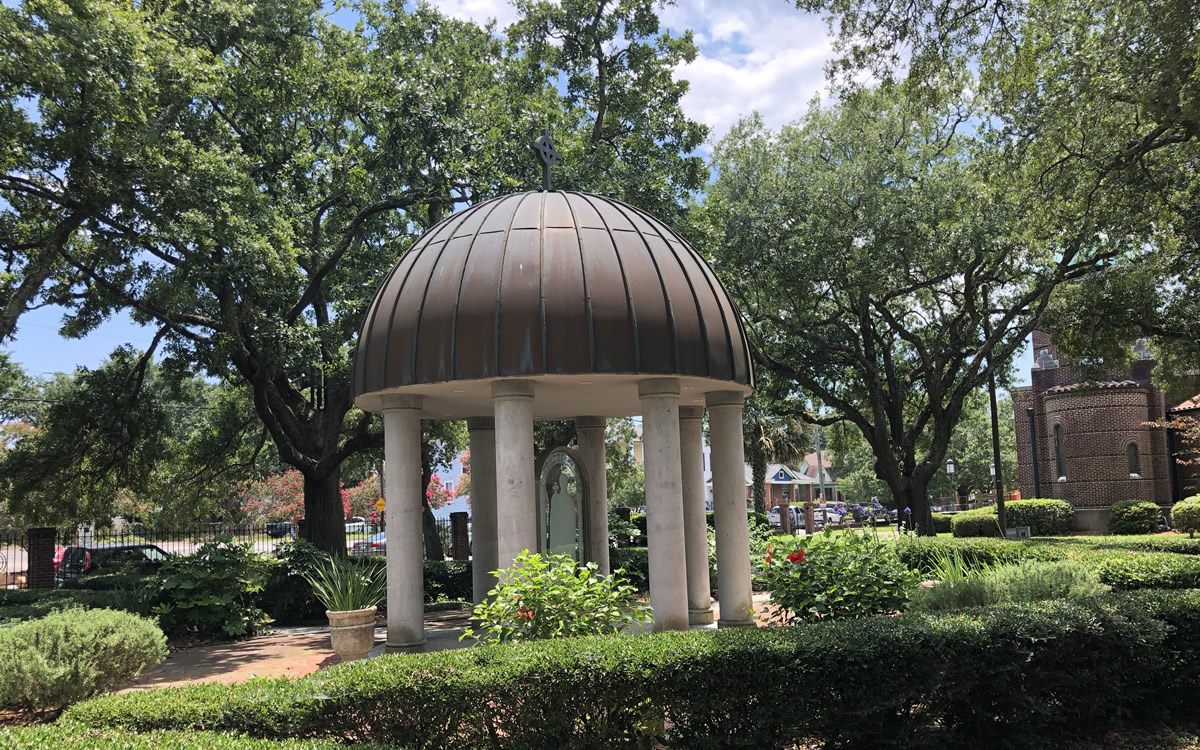
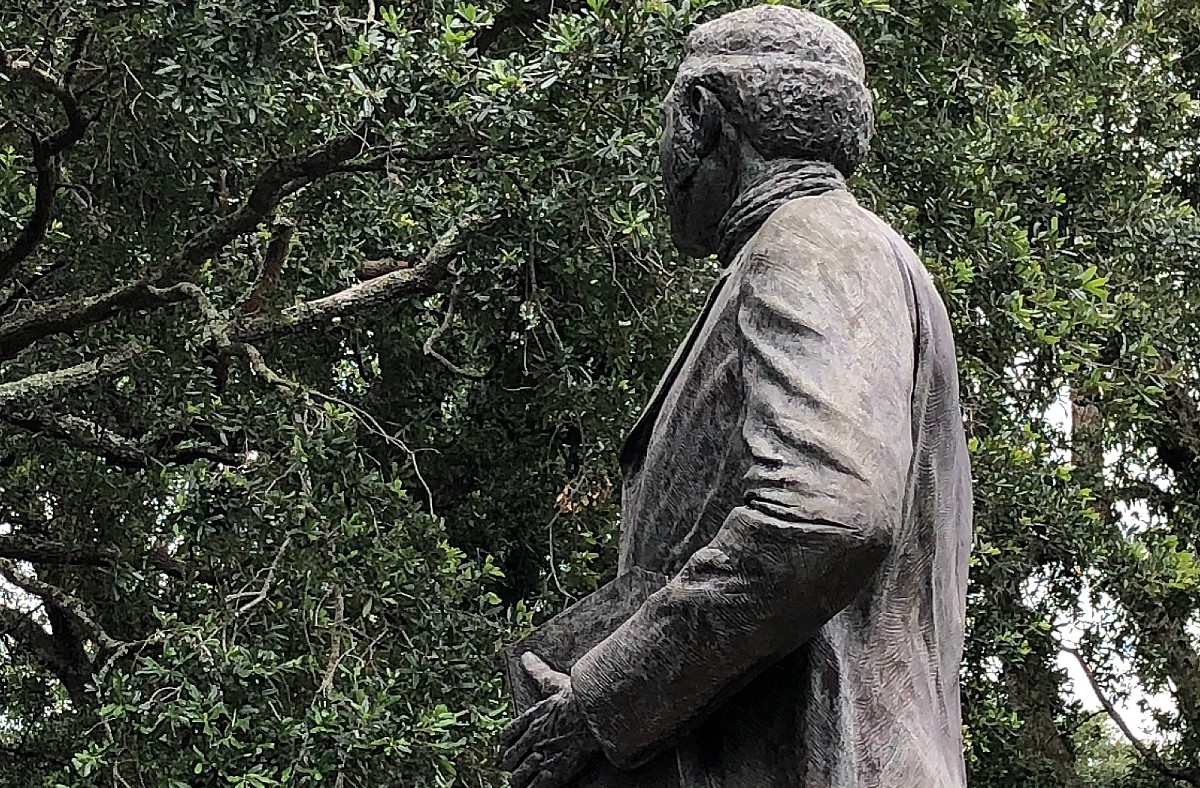

 We Can Do Better, South Carolina!
We Can Do Better, South Carolina!
























